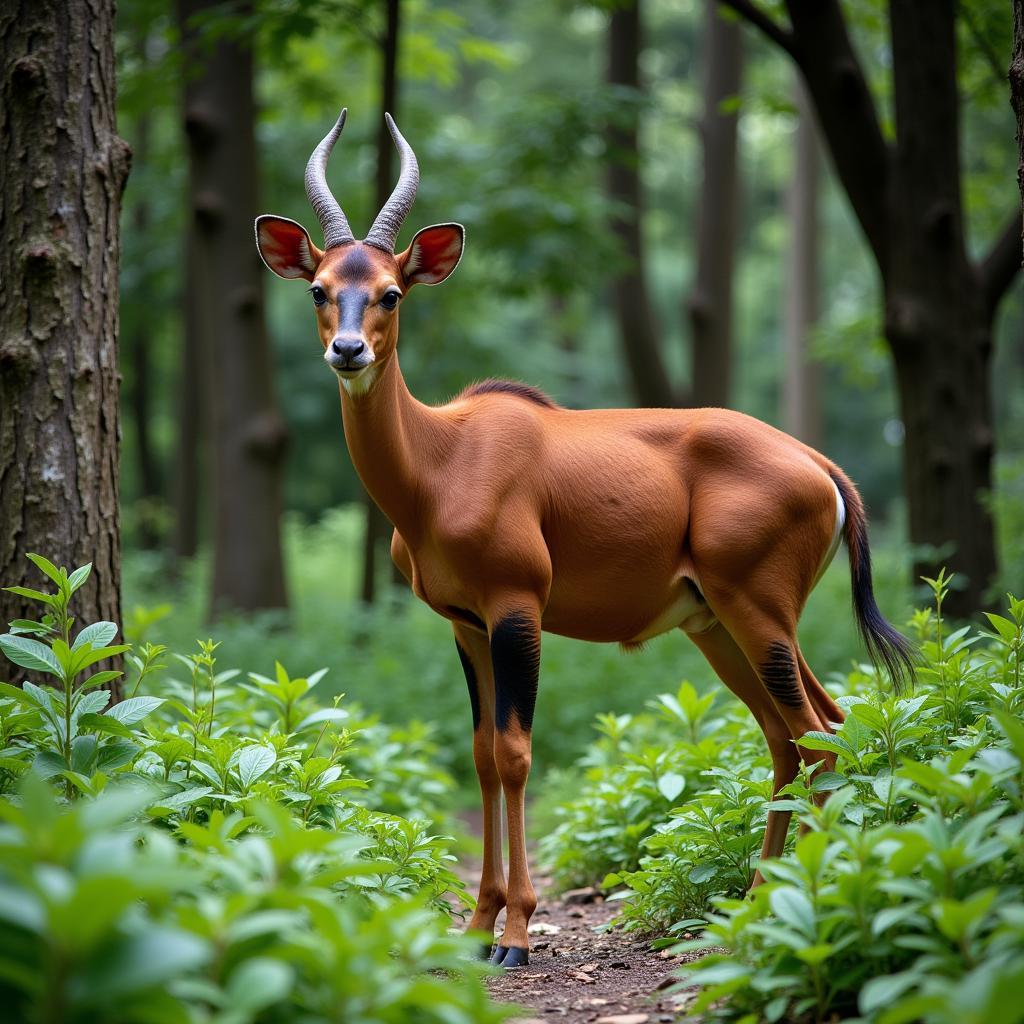African Elephant Predators: Threats to Giants
African elephants, the largest land mammals on Earth, are often seen as symbols of strength and power. However, even these giants face threats from predators, particularly in their early years. While adult elephants have few natural enemies, young calves are vulnerable to attacks from lions, hyenas, and crocodiles.
The Vulnerability of Elephant Calves
Newborn elephant calves, weighing around 200 pounds, are relatively helpless. They rely entirely on their mothers and herd for protection during their first few years of life. While their size might seem intimidating, their lack of experience and undeveloped tusks make them prime targets for opportunistic predators.
Lions: Apex Predators on the Savannah
Lions, the apex predators of the African savanna, pose a significant threat to young elephants. These social cats often hunt in groups, using their strength and numbers to overpower their prey. A pride of lions working together can successfully bring down a young elephant, particularly if it’s separated from the herd.
Hunting Strategies and Challenges
Lions typically target calves that stray too far from the protection of the herd or become isolated during chaotic moments, such as river crossings. However, even a coordinated attack on an elephant calf is not without risk for lions. An adult elephant, especially the matriarch, will fiercely defend the young, using their massive size, powerful tusks, and strong legs to ward off attacks.
Hyenas: Opportunistic Scavengers and Hunters
While often associated with scavenging, spotted hyenas are also formidable predators. Like lions, they employ cooperative hunting strategies and have powerful jaws that can inflict serious damage. Hyenas are particularly adept at exploiting vulnerable moments, such as when an elephant calf is injured or separated from its herd.
Exploiting Weakness
Hyenas are known for their stamina and persistence. They may follow an elephant herd for days, waiting for the opportune moment to strike. Their scavenging nature also means they’ll readily take advantage of any elephant calf carcass, even if they didn’t make the kill themselves.
Crocodiles: Lurking Danger in the Water
Waterholes and rivers, essential for elephants to quench their thirst, can also be places of danger. Nile crocodiles, Africa’s largest crocodilian species, are ambush predators that lurk beneath the surface, waiting for unsuspecting prey to come within striking distance. While adult elephants are generally too large for crocodiles to target, calves are particularly vulnerable during river crossings.
Ambush Tactics
Crocodiles use a combination of stealth and explosive power to capture their prey. They lie in wait, often with only their eyes and nostrils above water, before launching a sudden attack. Their powerful jaws and sharp teeth can deliver a fatal bite, and they drag their victims underwater to drown them.
Human-Wildlife Conflict: A Growing Threat
While natural predators play a role in regulating elephant populations, human activities pose the most significant threat to their survival. Habitat loss due to expanding human populations, agriculture, and infrastructure development has resulted in increased human-elephant conflict. This conflict often leads to elephants being killed in retaliation for crop raiding or perceived threats to human safety.
Conservation Efforts and the Future of African Elephants
Protecting African elephants from both natural predators and human-induced threats is crucial for their long-term survival. Conservation efforts focus on several key areas:
- Habitat Protection: Establishing and maintaining protected areas where elephants can roam freely without the threat of human encroachment is essential.
- Anti-Poaching Measures: Combating poaching for ivory and other elephant products is critical to reducing the illegal wildlife trade.
- Community Engagement: Working with local communities to reduce human-elephant conflict through strategies such as elephant-proof fencing and alternative livelihoods is crucial.
By addressing the challenges facing African elephants, we can help ensure that these magnificent creatures continue to roam the African landscape for generations to come.
FAQs about African Elephant Predators
1. Are adult African elephants ever killed by predators?
While rare, adult elephants can fall victim to predators, particularly if they are old, injured, or weakened by drought or illness.
2. Do elephants recognize the threat posed by different predators?
Yes, elephants display different warning calls and defensive behaviors depending on the predator. For example, they use different calls to warn of lions, hyenas, and bees.
3. What role do elephants play in their ecosystem?
Elephants are considered keystone species, meaning their presence has a disproportionately large impact on their environment. They create clearings in forests, dig waterholes, and disperse seeds, influencing the habitat and survival of other species.
Do you want to learn more about African elephants and the challenges they face?
Explore these related articles:
- african black mamba snake
- african elephant characteristics
- african elephant adaptations to environment
- african elephant weight in kg
- african grassland habitat
Contact us for support at:
Phone Number: +255768904061
Email: kaka.mag@gmail.com
Address: Mbarali DC Mawindi, Kangaga, Tanzania.
Our customer care team is available 24/7.


